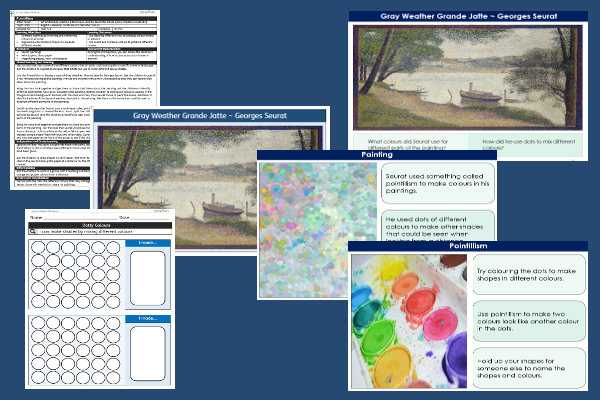Lesson Two – Pointillism

This art and design teaching pack for Key Stage Two gets the children to identify and practise a technique used by Seurat to create a range of different colour shades in a painting of a landscape scene.
The class can try using and combining dots of colour to make a selection of shapes to use in future artwork when replicating the painting style of Seurat.
Download this teaching pack including a lesson plan, classroom activities and an interactive presentation to identify and practise a technique used by Seurat to create a range of different colour shades in a painting of a landscape scene
Activities in this teaching pack include a display poster to explore and describe the colours and techniques used in a painting by a significant French artist and a worksheet to produce a selection of different shapes using pointillism to combine colour to produce a range of shades.
The interactive presentation gets the children to explore a technique used by Seurat to create a range of different colour shades in a painting.
This lesson is part of an art and design scheme of work to get the children to identify, describe and replicate the painting style of a significant French artist by using pointillism to create scenes of different landscape views. There are teaching activities for shared learning, differentiated worksheets to support independent learning and interactive presentations to introduce concepts and key skills.
-

English Spelling Assessment
Assess abilities in spelling different vocabulary words based on the National Curriculum programmes of study for Key Stage Two
-

Subtraction Differences
Explain and model some of the informal and formal written calculations skills that can be used to find the difference between pairs of two and three digit numbers
-

Fraction Equivalence
Investigate, compare and record the values of different non-unit fractions using equivalence between their sets of matching numerators and denominators
-

World Wars Poems
Explore and reflect on how poets can use figurative language and verse structures to express themes and ideas about conflicts that have happened in the world
